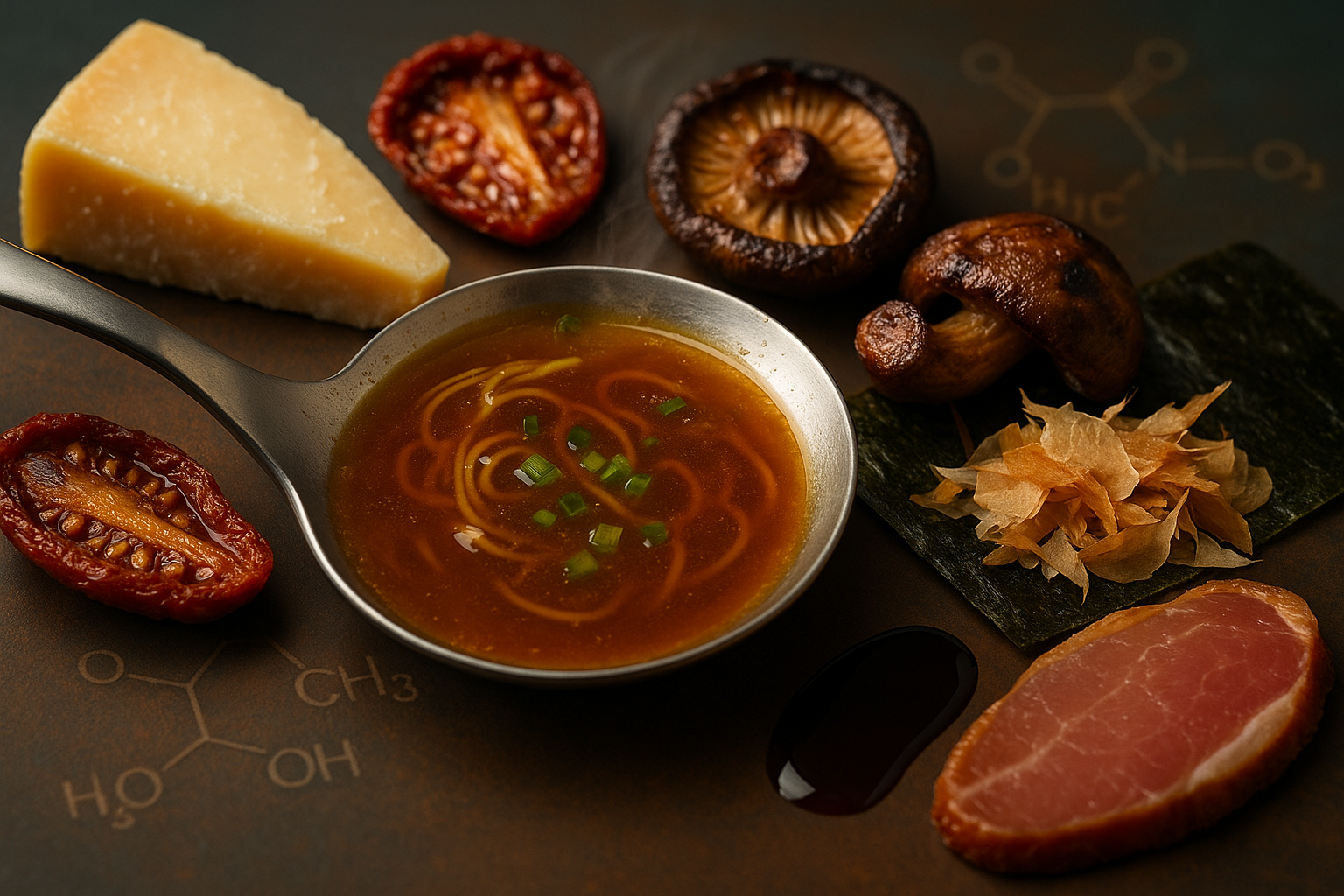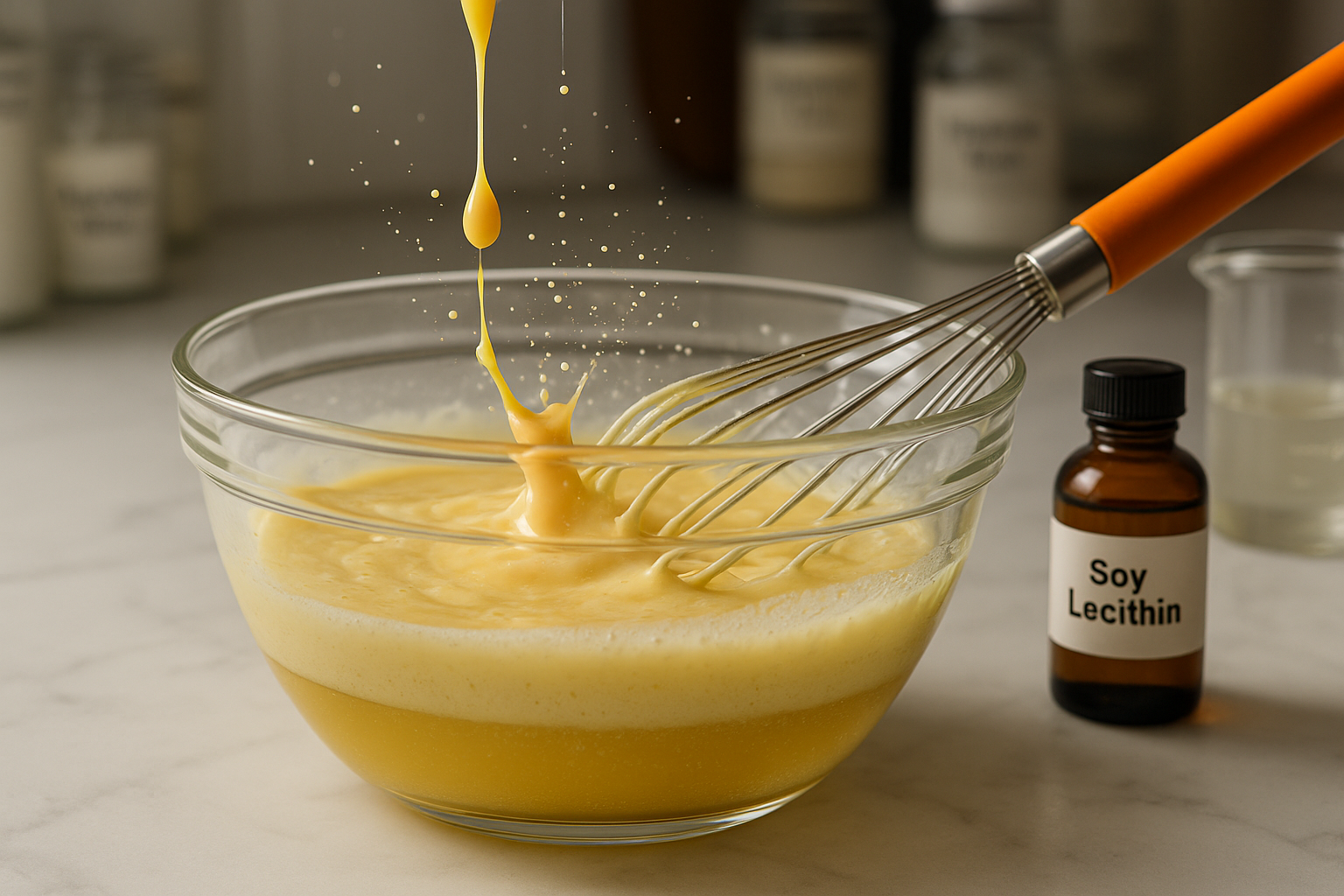
Unlocking Home Cook Secrets Using Thickeners
SUBSCRIBE TO OUR BLOG
Promotions, new products, and recipes.
Discover the techniques of home cooking with thickeners for sauces and stews, as well as gluten-free baked goods. Enhance your recipes by learning how to properly match thickeners to ingredients and use different methods in order to achieve the perfect consistency every time. Unlocking this secret will elevate both texture and flavor profile of any dish!
Key Takeaways
-
Master the art of thickening sauces using different thickeners such as cornstarch, arrowroot powder, potato starch and tapioca starch.
-
Enhance flavor by incorporating thickeners into cooking techniques to intensify taste and elevate home cooking.
-
Avoid lumps and clumps with careful incorporation of thickeners while understanding effects on cooling/reheating for desired texture in dishes.
Mastering the Art of Thickening Sauces
Thickening sauces is a key technique in the culinary world, with various thickeners adding to taste, texture and mouthfeel of dishes. Some examples include cornstarch, tapioca starch, wheat flour and arrowroot, all contributing different properties that influence the consistency and color when combined together correctly. To take advantage of these ingredients’ thickening power requires understanding gelatinization. This process involves heating starches along with water which then leads to an increased viscosity due to swollen granules plus the intermingling between molecules from within each starch particles.
Understanding Different Thickeners
When cooking, it is important to understand the properties of different thickeners in order to choose one that best suits your dish. Cornstarch is a popular and versatile thickener with transparency, no flavor, vegan-friendly ingredients and being gluten-free as well. If you opt for cornstarch when using this thickening agent, mix together some cold liquid before adding into the mixture, this will help create an instant thickness while avoiding lumps from forming. On top of that we have arrowroot powder made from tropical plants which works effectively on fruit pie fillings or sauces containing lemon juice/tomato paste due its neutral taste yet glossy finish. Another choice similar would be potato starch and tapioca starch found through cassava plant root vegetables having a powerful capacity for giving texture along with maintaining ideal consistency after cooling too – suitable if looking for other pure starches instead! Comprehending how these substances can influence your dishes shall enable choosing correctly between them all so you are sure nothing gets harmed during enhancing either tastes or textures required by your recipes
Introducing Hydrocolloid Thickeners
Hydrocolloid thickeners are substances that can improve the texture and stability of a variety of dishes when mixed with water. For example, tapioca starch has a neutral taste which creates an appealing glossy effect in sauces or baked products derived from cassava plant. To this, xanthan gum is another thickening agent frequently used by food companies since it offers all-purpose stabilizing properties. Lastly, pectin is predominantly employed as a means for thickening jams and jellies while maintaining its flavor profile intact. Knowing these distinct features of each hydrocolloid thickener will help you select the most suitable option according to your requirements. Enabling you get creative with cooking!
Techniques for Proper Thickening
It is important to understand the appropriate procedures for incorporating thickeners in order to achieve the required viscosity of your sauces. A helpful technique here would be combining a starch with cooled liquid (commonly known as slurry) before adding it into your dish so that there will not be any lumps or clumps and everything gets evenly distributed. Another crucial part when thickening something is how much you cook it. If done too briefly, then an unpleasant taste from raw flour may occur, whereas overly cooking can lead to having sauce which turns out too dense. One should also pay attention towards cooling and reheating properties of chosen thickeners since some won’t cope well after temperature adjustments while changing texture of dishes still needs consideration when altering thicknesses involved . Mastering these techniques correctly allows achieving desirable consistency along with delicious flavor that might just satisfy even most discerning palates!
Enhancing Flavor with Thickeners
It’s essential to select the right thickener for your dish and combine it with compatible ingredients in order to make use of its flavor-enhancing properties. This way, you can create unforgettable dishes that burst with flavour. Thickeners are useful as they not only improve the texture but also add complexity by binding and trapping molecules which releases flavor over time while concentrating other flavors. With thickeners at hand, a culinary creation is harmoniously presented while enhancing taste experiences too!
Matching Thickeners to Ingredients
Choosing the most suitable thickener for your ingredients is a major step in making sure that all flavors and textures of a dish will blend well. Specifically, arrowroot powder offers both an appealing glimmer as well as an unobtrusive flavor to fit in with any fruit pies or stir-fry sauces. Taking into account the level of acidity present while cooking can determine what sort of thickening agent should be used. Cornstarch may not work effectively due to its incapability when put against acidic elements, so it’s best practice to choose something like arrowroot which retains its capacity even among tart food items. This way you’ll always be ableto attain the desired consistency and savoriness within every meal prepared!
Creating Depth of Flavor
Cooking with the right thickener requires more than just knowledge of its components. It also necessitates familiarity in how it interacts with other factors such as the cooking process and added ingredients to create a dish that offers an enriched flavor profile. For instance, reducing a sauce through simmering helps elevate tastes by deepening flavors while creating mouthwatering textures due to concentration of essential elements within them.
By refining your techniques on utilizing thickeners, you can truly take your dishes up another notch not only for depth but overall gratification from cooking at home! Learning about nuances between each element involved is key when mastering this art, understand which steps make all the difference and appreciate those subtle touches present within every flavorful meal created afterwards!
Tips and Tricks for Perfect Consistency
For the ideal result in your cooking creations, you need to consider many factors when it comes to thickening. Picking out and incorporating an appropriate starch can make or break a dish’s desired consistency – and getting that just right involves expertise with adjusting according to cooling or reheating processes.
Thickeners like cornstarch may not retain their full power if cooled, while others such as potato starch manage to keep up their intended texture even after being stored away cold for some time, knowing these details will help adjust accordingly during the entire culinary process. Although there is no one-size fits all solution for achieving perfect thickness every single time. Honing this art requires developing proficiency at different techniques alongside knowledge of thickeners’ capabilities so flavorsome dishes hit the mark when it comes down to flavor, feel and consistency alike!
Avoiding Lumps and Clumps
Any home cook knows lumps and clumps can be a source of frustration when trying to make sauces or stews. With the right technique, One can enjoy perfectly smooth results each time they cook. To prevent lump formation, start by mixing the thickener with some cold liquid until it forms a slurry, this ensures even distribution in your hot dish once added in later on. Stir constantly while adding the thickener and let everything simmer for several minutes So that all particles are thoroughly dissolved without causing any unwelcome surprises from unexpected chunks! Doing these two simple steps will lead to delicious meals every single time you reach for your cooking pot.
Adjusting Thickness on the Fly
Cooking can be a tricky task and to get the desired consistency in your dishes requires making quick alterations. If you find yourself with a sauce or stew that is too thin, adding an appropriate amount of thickener should do the trick for bringing it up to par. On the other hand, if what you’ve created is thicker than expected then incorporate some liquid into mixture bit by bit while whisking continuously, this will help avoiding lumps from forming as well as distribute evenly. Having this ability makes cooking at home more enjoyable since it allows adjusting sauces depending on ingredients used during certain stages of preparation.
Cooling and Reheating Considerations
When creating thickened dishes, the cooling and reheating process can be a determining factor in maintaining an ideal texture. Potato starch keeps its desired consistency during this cooking period while cornstarch may lose some of its thickening power when cooled. To ensure you get consistent results throughout the process, it is best to have knowledge about your thickeners’ properties and make any necessary adjustments.
For sauces that are being cooked then chilled or re-heated again later on, stirring frequently before heating up will prevent lumpiness from appearing. Adding a small amount liquid also helps retain moisture for smoothness too.
Thickeners in Baking
Thickeners are not only important for making sauces and stews, but they can also give a boost to baking. By using thickeners in your confections you will get the perfect texture and consistency needed to make delicious fruit pie fillings or gluten-free baked goods. Thickeners have additional advantages. Their ability of thickening is linked with increased flavor of pastries that makes them more enjoyable overall.
Whether it’s a beginner baker or an experienced one, understanding the role played by these substances while cooking desserts results in higher quality final product that everyone would want to taste!
Perfecting Fruit Pie Fillings
Creating a perfect fruit pie filling is achievable with the ideal thickener and some adjustments. The success of such fillings depends on which thickening agent you select, as cornstarch in combination with sugar makes for an even consistency that doesn’t clump together. If used correctly, this mixture can create superb sweetness, flavor and texture within your pie’s filing layer.
For those aiming to achieve their desired results from their chosen fruits for use in pies, understanding how much cornstarch needs to be added plays a vital role. It should always depend upon the type of fruits being used and design specifics associated with each particular pastry recipe’s make-up. Ultimately though if done right here then one will find themselves enjoying perfectly textured servings when slicing into fresh outta oven cakes!
Gluten-Free Baking with Thickeners
For those following a gluten-free lifestyle, baking can prove difficult since traditional flour is not available. With the correct knowledge of how thickeners interact with other components in recipes one can still create amazing baked treats which are both tasty and similarly textured to wheat based products.
These starches include cornstarch, tapioca starch, arrowroot flour and potato starch while cake flour may be replaced by baking powder for desired outcomes without any significant variations in taste or texture when compared to its regular counterpart.
Thus it’s possible for individuals on such diets to enjoy their favorite foods as these ingredients provide an alternative means through which delicious homemade goods like cakes or muffins become viable options once more!
Summary
As a home cook, understanding the power of thickening sauces is key to creating sensational dishes with sublime texture and flavor. Once you master it by knowing how different thickeners interact with each ingredient, your cooking skills will reach new heights. Explore this technique and let your culinary creativity flow. Adding thickeners can take even everyday meals up a notch!
Frequently Asked Questions
How do you make a homemade thickening agent?
To make a homemade thickening agent, combine 2 tablespoons of flour with 1/4 cup cold water and whisk until smooth, then add to your sauce over medium heat. Alternatively, mix one tablespoon of starch with 2 tablespoons of water, then stir into 1 cup of hot liquid until the gravy thickens.
For every one cup of cooking stock use one tablespoon of cornstarch mixed with one tablespoon cold water for a medium-thick sauce. Test with a spoon to ensure desired consistency is reached.
How do you use thickening agents?
Thickening agents are typically added to a hot liquid in the form of a slurry (a mixture of starch and cold liquid), then brought to a boil while whisking.
It’s recommended to use two tablespoons wheat flour, one tablespoon cornstarch, one tablespoon tapioca, four teaspoons arrowroot or one and a half teaspoon potato starch per cup of liquid for a medium consistency sauce.
What are those four 4 soup thickening agents?
When making soups, the use of cornstarch is very popular as it is a fine white powder obtained from corn. Flour has also been used in cooking for a long time and provides an ideal thickening agent. Starch extracted from tropical root vegetables (arrowroot) can be another great choice when looking to thicken dishes while potato starch comes directly from potatoes that are perfect for this purpose too. All these ingredients – flour, arrowroot, potato starch and cornstarch, prove useful as thickening agents in many culinary recipes such as soups or stews.
What is the difference between a starch and a gum?
Starch and gum, two types of thickening agents often used for cooking, both originate from plants. Starch is a carbohydrate while gums are hydrocolloid substances that form gels upon being combined with water. Both can be utilized in the kitchen as effective thickeners.
How can I adjust the thickness of a dish in real-time?
To obtain the preferred thickness in a dish, you can whisk while adding either liquid or thickener little by little until the desired consistency is achieved.
We Invite Your Comments, please:
We would apprecaite hearing from you. Please add your comments below. We will reply to them.
See: The Hydrocolloid Glossary
For further reading:Master Your Cuisine: Three Ingredients (Hydrocolloids) Home Cooks Should Have

About the Editor
About the Chef Edmund: Chef Edmund is the Founder of Cape Crystal Brands and EnvironMolds. He is the author of several non-fiction “How-to” books, past publisher of the ArtMolds Journal Magazine and six cookbooks available for download on this site. He lives and breathes his food blogs as both writer and editor. You can follow him on Twitter and Linkedin.


|
About the Author Ed is the founder of Cape Crystal Brands, editor of the Beginner’s Guide to Hydrocolloids, and a passionate advocate for making food science accessible to all. Discover premium ingredients, expert resources, and free formulation tools at capecrystalbrands.com/tools. — Ed |
Enjoyed this post? Subscribe to The Crystal Scoop
Food-science tips, ingredient know-how, and recipes. No spam—unsubscribe anytime.
- Choosing a selection results in a full page refresh.



